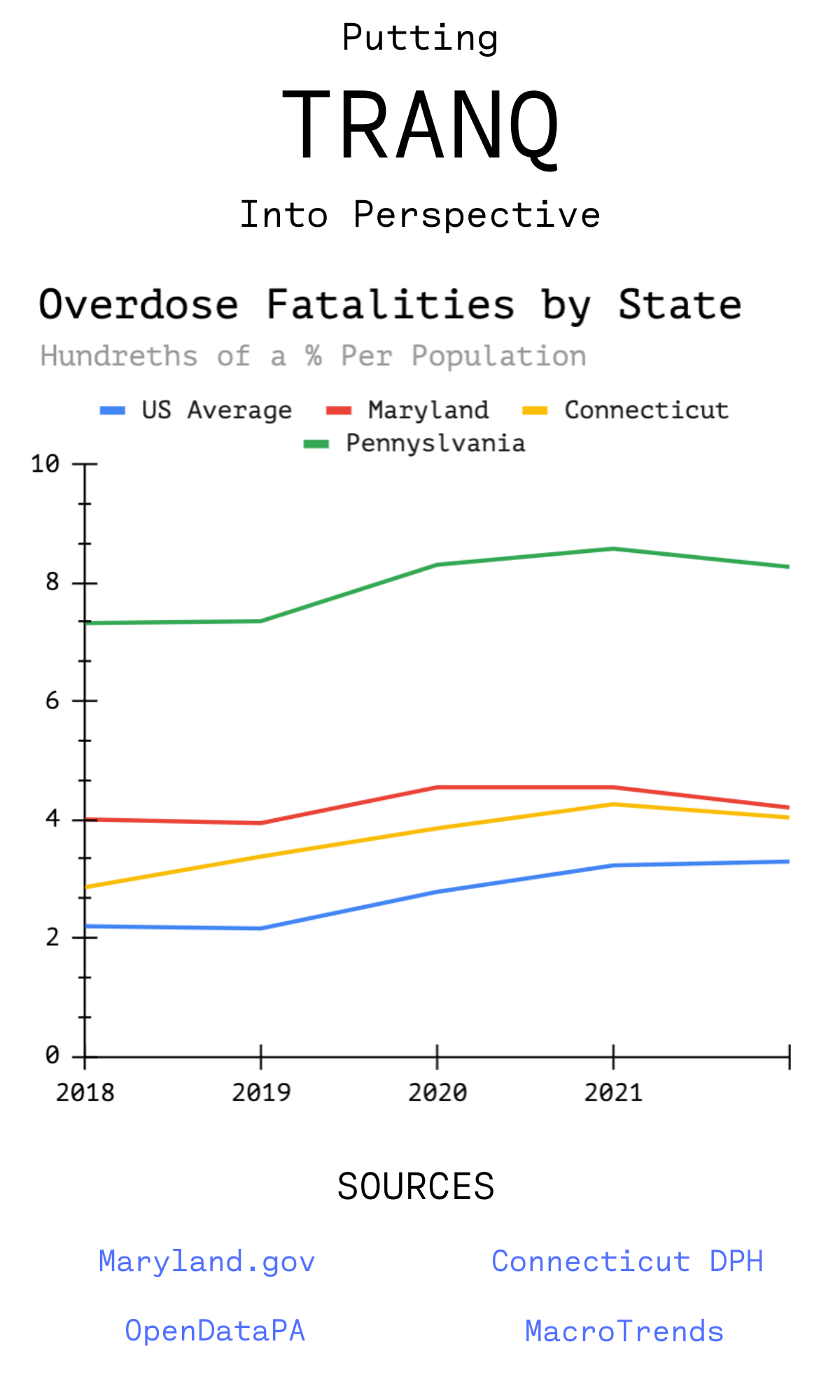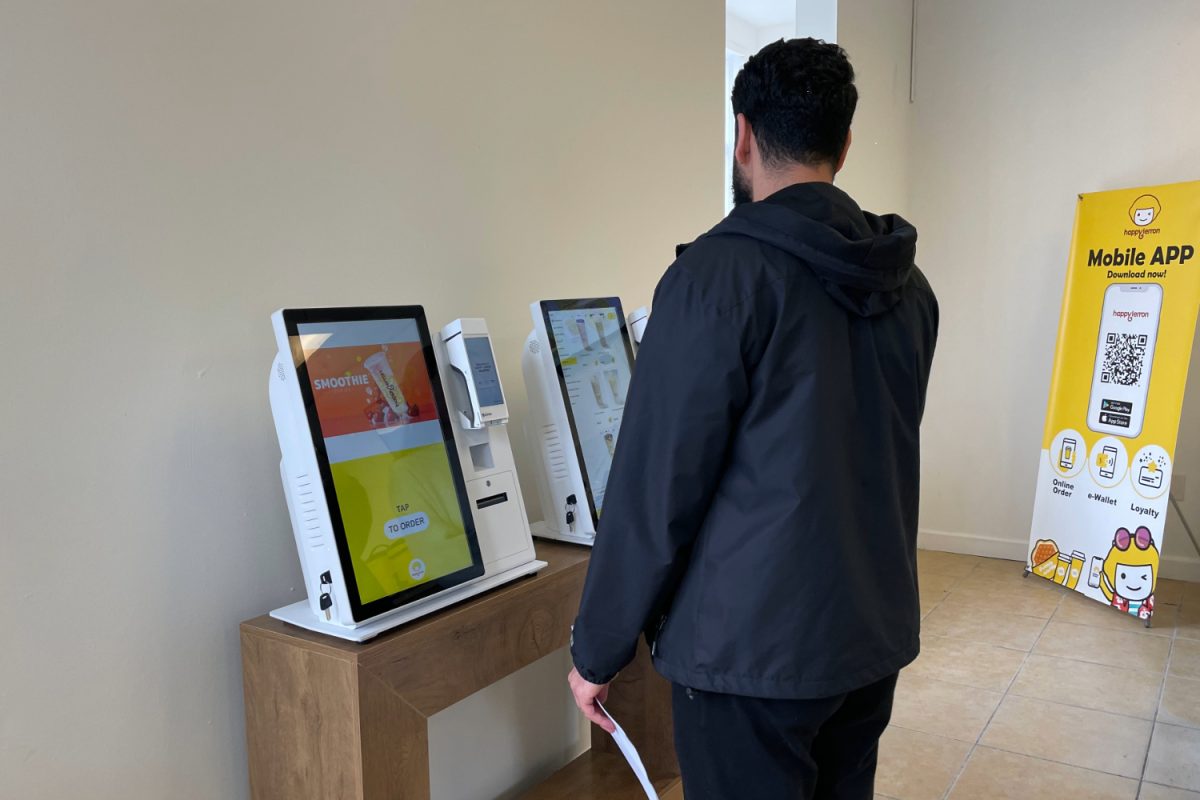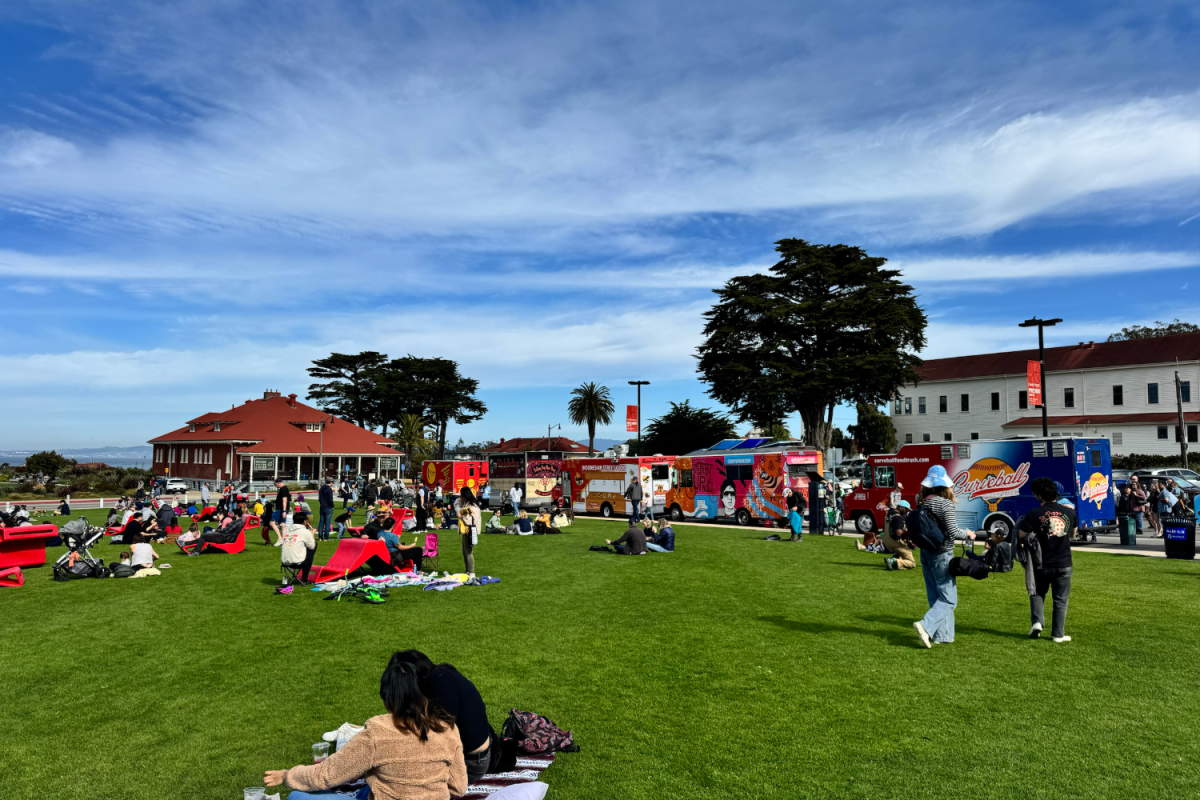Xylazine was a drug initially used as an animal tranquilizer, widely known for its usage in horses. But in these past years, it has seen increasing usage in another animal:
Humans.
While fentanyl is notorious for its lethality and range of audience, drug sellers have been combining fentanyl with xylazine, known on the street as “tranq,” to make the highs last longer, compared to opioids adulterated solely with fentanyl.
In addition to the effects of fentanyl, the xylazine in tranq also complicates health effects with symptoms such as low blood pressure, heart rate, and, most notably, necrosis.
Tranq has existed in Puerto Rico since the early 2000s, known as “Anestesia de Caballo.” However, it has been documented in places such as Maryland and Philadelphia since the 2010s, with studies of its effects only rising to prominence in late 2021.
The U.S. currently doesn’t recognize xylazine as a controlled substance, but in states such as Pennsylvania, Maryland, and Connecticut, drugs adulterated with xylazine have seen massive rises in the 2020s.
Corporal Jasmine Reilly, who has worked as a patrol officer for ten years, now serves at the Philadelphia Office of Public Affairs.
“Philadelphia has become a sort of ‘mecca’ for drug users. When I was on the street, tranq wasn’t something I encountered a lot—but you could throw a rock, and it’d find a someone using drugs by the time it landed,” Reilly said.
Although tranq’s rise has been concentrated in eastern states of the United States, Carlmont itself is no stranger to the pains of opioids.
“I’ve tried a variety of (opioids) due to surgeries, but I’ve also lost seven people in my life to accidental overdoses,” said Jeffery Tanguay, an Ethnic Studies and World History teacher at Carlmont.

First responders often carry Naloxone, a medication designed to reverse the effects of opioids, for people dealing with overdoses. Still, the prevalence of tranq means that it’s becoming more common for recipients – willing or unwilling – to simply not be able to wake and start breathing, said Reilly.
A recent 2021-2022 study in Maryland found nearly 80% of all opioids laced with xylazine. Meanwhile, Philadelphia and Pennsylvania saw 31% of fatal heroin and fentanyl overdoses also contaminated with xylazine.
The Biden-Harris Administration also released a public statement denoting tranq as an emerging drug threat—the first time President Biden has used his executive designation authority thus far.
In response, sixteen states, such as California, have seen new pushes for legislation against the drugs. At the same time, the U.S. Congress has also introduced HR 1839 – meant to combat xylazine by establishing criminal penalties for the drug and classifying it as a controlled substance.
“Tranq is devastating in our fight against the overdose epidemic. Although California is not yet seeing tranq at the same rates as other states, legislation will help the state stay ahead,” Governor Newsom said.
Although concrete statistics for the sales of tranq are not easily obtainable, the rise in deaths from synthetic opioids, mainly fentanyl, has risen to 68% as of 2022, with 2023 studies still in progress. The total overdose fatalities total around one hundred thousand deaths as of August 2023, with the CDC reporting that number to still be lower than the actual count.
Corporal Reilly, too, has been affected close to home by tranq: A close relative of hers is addicted to heroin and tranq.
“It’s really important for people to understand that. A lot of people think cops are disconnected from these issues, but that’s not true at all,” Reilly said.
According to the National Center for Drug Abuse Statistics, over a million Americans are arrested annually for drug-related crimes.
For the sixty million Americans dealing with addiction, the complications of xylazine-laced opioids present yet another challenge to overcome in the fight against opioids. According to Axios, overdose patients average a 33% higher billing cost compared to other ER patients.
“Using drugs affects so many more people than just the users and the sellers. It’s not just a single person’s issue—it’s a social issue,” Reilly said.












